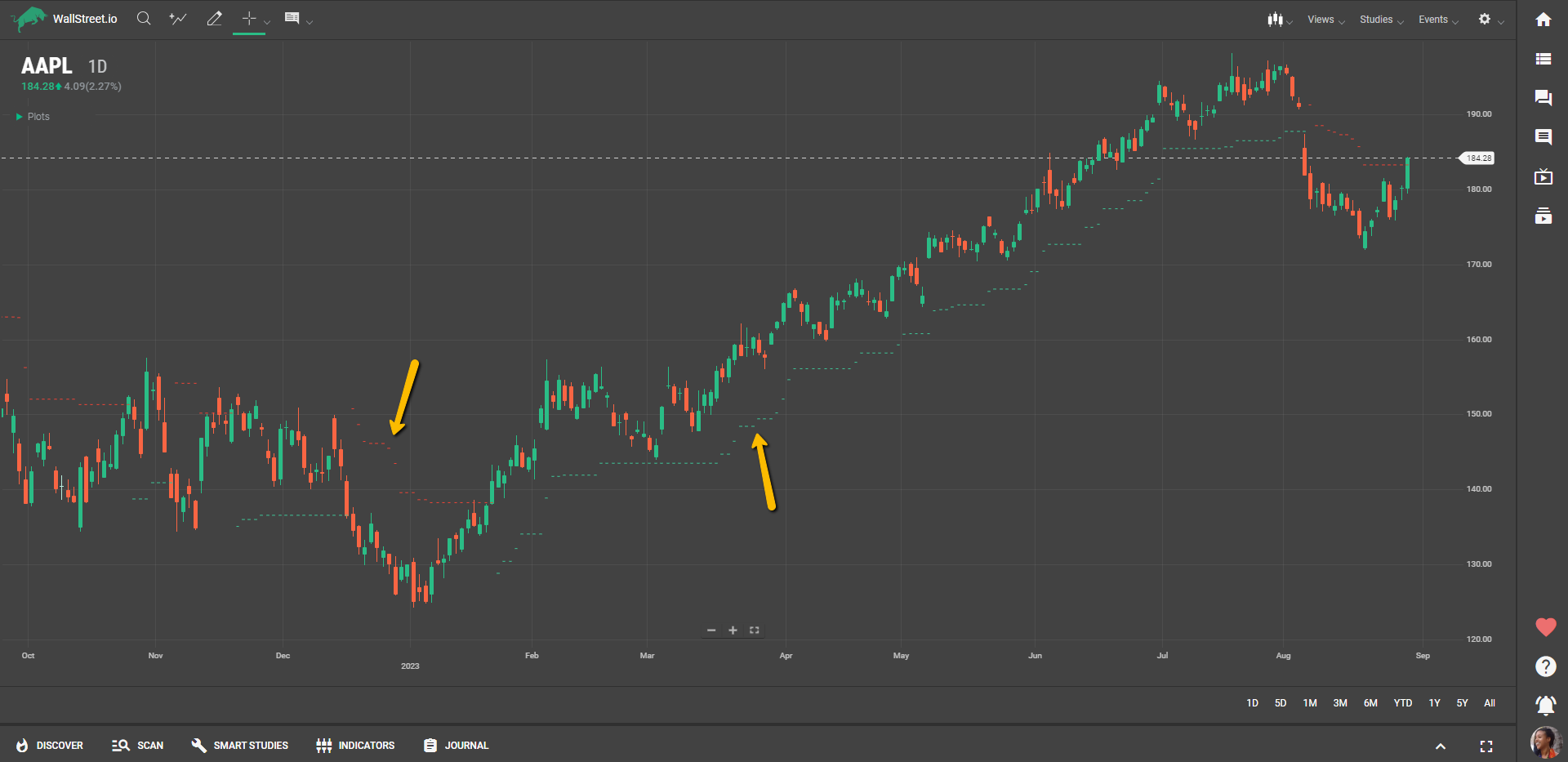
ATR Trailing Stops
Definition
The ATR Trailing Stops is a technical indicator that helps traders set dynamic stop-loss levels based on market volatility. Using the Average True Range (ATR), this indicator places a trailing stop point that adjusts itself as the market moves. In a rising market, the trailing stop will climb higher, following the price. In a declining market, it will move lower. The indicator is designed to flip positions when the price moves above or below the trailing stop line.

Suggested Trading Use
Traders can use ATR Trailing Stops to manage risk and protect profits. In an uptrend, the ATR-based trailing stop can serve as a protective floor, allowing profits to run while selling the asset if prices begin to reverse. In a downtrend, the trailing stop can act as a ceiling, giving traders a point to exit short positions or enter new long positions when the trend seems to be reversing.
The ATR Trailing Stops Study can also be useful for identifying trend reversals. When the stop line flips from being below the price in an uptrend to above the price in a downtrend (or vice versa), it can be an early indication that the current trend may be coming to an end.
By incorporating the ATR Trailing Stops into their trading strategy, traders can more effectively manage their open positions and make informed decisions based on market volatility. This study is especially beneficial for traders who want a dynamic, volatility-adjusted way to manage risk.

 Discover Tab Reference Guide
Discover Tab Reference Guide Discover Tab How-To Guide
Discover Tab How-To Guide Smart Studies How-To Guide
Smart Studies How-To Guide Smart Studies Reference Guide
Smart Studies Reference Guide Scan Tab Reference Guide
Scan Tab Reference Guide Scan Tab How-To Guide
Scan Tab How-To Guide Watchlists How-To guide
Watchlists How-To guide Watchlists Reference Guide
Watchlists Reference Guide Chatrooms Reference Guide
Chatrooms Reference Guide Community Wall How-To Guide
Community Wall How-To Guide Community Wall Reference Guide
Community Wall Reference Guide Streams Reference Guide
Streams Reference Guide Streams How-To Guide
Streams How-To Guide